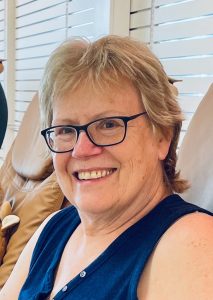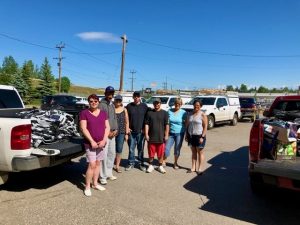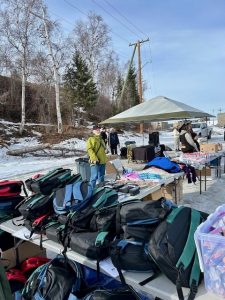Partner Spotlight Series
by Sumaiya Tufail

Tell us about the history of Prince George Community Partners Addressing Homelessness (CPAH). How and why did it start?
We are a registered society, a partnership consisting of community social service agencies and government representatives, including UNBC. The organization originated in the 1990s-2000s as a response to the Canadian government’s initiative to establish a community advisory board for selecting agencies to receive funding for homelessness. The federal government, through their homelessness program, designated 61 communities in Canada, including Prince George. The advisory board, mandated to be representative of social service agencies, schools, churches, and individuals with lived experience, was tasked with creating a plan and recommending agencies for funding. CPAH adjusted through changing government directives, and has now evolved to a separate community partnership committee. Our group continues to work on community plans, research, and addressing issues related to homelessness and poverty in the community.
How did you become involved in the organization?

I was initially hired as a coordinator for a one or two-year project approved by the federal government. Over the years, I’ve worked on community plans, yearly reports, homeless counts and various initiatives. Currently, I am involved on a donation basis, striving to stay connected with the community and addressing homelessness issues, including the ongoing challenges with tent encampments and battles with the city. We are actively seeking solutions and a path forward.
“Homelessness embodies precarity at its core. Individuals living under a tarp on the sidewalks face the most precarious situations imaginable.”
Is there a particular project you’re excited about and why?
I am excited about the research project exploring the identities and paths of individuals who are unhoused. It aims to dispel misconceptions by asking questions about their lives and understanding the turning points that led them to their current situations. Beyond employment, the project addresses the inadequacies of the social safety net in preventing the loss of livelihoods. Dawn Hemingway, CPAH’s Chair, has emphasized the need for CPAH to have a voice in addressing the connection between precarity and homelessness, especially considering the disproportionate homelessness among indigenous populations revealed in the last homeless count.

The project we applied for through UP-BC aims to gain a clearer understanding of the vulnerable individuals by examining the information collected by agencies providing drop-in meals, housing, and outreach programs. By consolidating this data into a cohesive report, we hope to develop models that can be applied to other communities in BC. Additionally, the project could lead to another project to explore the job precarity of social service workers, and the precarity of non-profit service providers.
What has working at this organization taught you?
Working with CPAH has taught me to listen to individuals, hear their stories, and recognize the complexity behind every issue. Coming from a background as a City Planner, where the focus was often on development projects, I’ve gained insights into the struggles faced by agencies and individuals dealing with housing precarity. Homeless counts and surveys have revealed the complexity of the issue, challenging me to avoid making assumptions about individuals who are unhoused.
